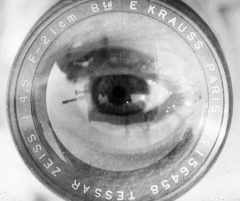If you haven’t read the course essentials post, which contains a link to the course outline as well as important course and time management information, please do so before reading this post. Also, a reminder that your first assignment, your digital feature critique, is due by 5 pm EST on Monday, June 24, as a post on your individual blog.
This week’s materials:
The Empathetic Newsroom: How Journalists Can Better Cover Neglected Communities (Bui, 2018)
Solutions Journalism: The Effects of Including Solution Information
in News Stories About Social Problems (McIntyre, 2019)
How Close is Too Close? Conflict of Interest in Journalists’
Relationships With Sources (Shapiro et al., 2014)
SOLUTIONS JOURNALISM: WHY IT MATTERS
from the solutions journalism network
This week, you’ll be exploring two complementary approaches to reporting complex stories: the role of empathy in building inroads in marginalized communities and the impact of solutions journalism on readers and their subjects. You’ll also be reading the CAJ’s 2014 report on conflicts of interest in sourcing. While you may not necessarily taking a solutions approach to your MRP, it’s important to think about the impact of your project and how you can maximize the potential for social change through your work.
The Empathetic Newsroom: How Journalists Can Better Cover Neglected Communities (Bui, 2018)
In this piece for the journalism non-profit, the American Press Institute, journalist P. Kim Bui lays the groundwork for building long-term trust with marginalized communities, especially those often misrepresented in media coverage. With input from an inclusive group of media leaders, she offers strategies for using an empathetic approach to increase diversity in the newsroom, build diversity into reporting and change the culture at news organizations.
Solutions Journalism: The Effects of Including Solution Information in News Stories About Social Problems (McIntyre, 2019)
In this article from the journal Journalism Practice, Virginia Commonwealth University professor Karen McIntyre, who studies constructive journalism, tests the effects of solutions journalism and explores whether this increasingly popular approach solution might mitigate some harmful effects of negative, conflict-based news. (If you’re interested in more scholarly work from Journalism Practice or Digital Journalism, you can access both of these journals via the Ryerson library portal.)
Canadian Association of Journalists Report: How close is too close? Conflict of Interest in Journalists’ Relationships With Sources (Shapiro et al., 2014)
This insightful 2014 report from the CAJ Ethics Committee explores important issues around journalists’ relationships with their sources. “Since the journalist’s responsibility is to convey fair, truthful and trustworthy information, her judgment should be influenced by the public interest rather than her personal stake in the outcome. Put another way, conflict of interest exists if the obligation to serve the public interest is threatened by the human urge to protect personal interests.” This piece offers a test for helping to determine whether a journalist is in a conflict of interest and offers strategies for addressing these issues.
________________________
Setting your blog to Private: The instructor and individual blogs are set to Public by default. Before you post your second assignment, which has details about your reporting plan, you may want to change your blog setting to Private, which means that it can only be viewed by registered users of our blogs, i.e. your instructor and your classmates. My blog will remain public.
To set your blog to Private, please follow these instructions:
- From the Dashboard for your site, go to the left sidebar menu and click on Settings
- Choose Reading and look for the section titled “Site Visibility”
- In the first section of options, click “Discourage Search engines”
- In the next set of options, choose “Visible only to registered users of this network”
Please email Lindsay Hanna (lindsay.hanna@ryerson.ca) if you have any questions. She’s back in the office as of Tuesday, June 25.
________________________
Second assignment: Your Research and Pre-Interview Plan is due, as a post on your individual blog, by July 8 at 5 pm EST. You will be submitting a 1,200-1,500-word early-stage proposal for how you will embark on research and preliminary interviews for your Major Research Project. Please organize your proposal into the following categories and include a working bibliography and source list (not part of word count):
- Project overview
- Story form and justification
- Primary and secondary sources
- Human sources
- Access to principal sources
- Reporting and production schedule
________________________
Online office hours: Our first Google Hangout is scheduled for Monday, June 24 from 8-9 pm EST. You should have received a Google invite for the video chat and can click on the link during that time to ask questions or discuss any issues related to your MRP. If for some reason you don’t receive the invite, the link is meet.google.com/prw-ugar-fob. Joining the Google Hangout is not mandatory and of course, if you have any questions, please drop me an email at asmaa.malik@ryerson.ca.
Have a great week!
Asmaa


